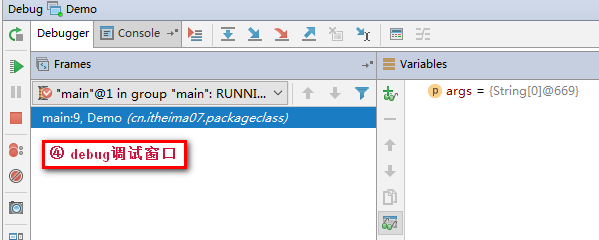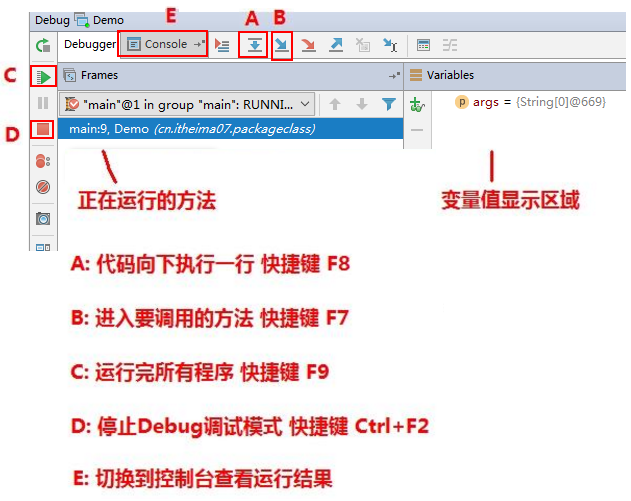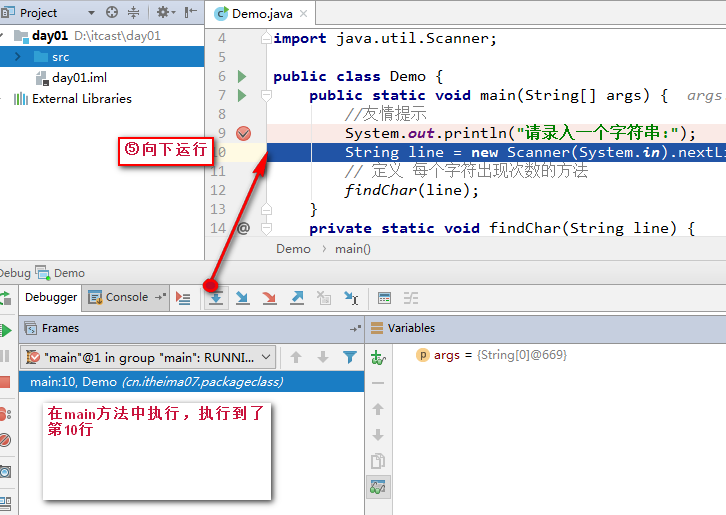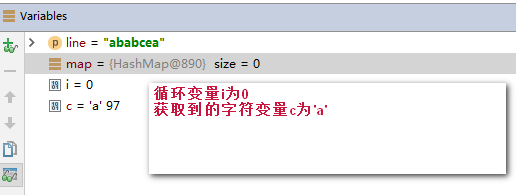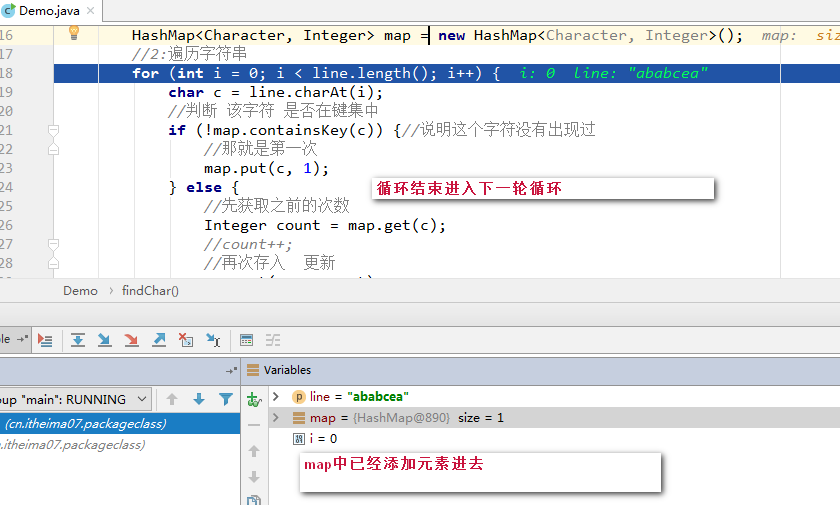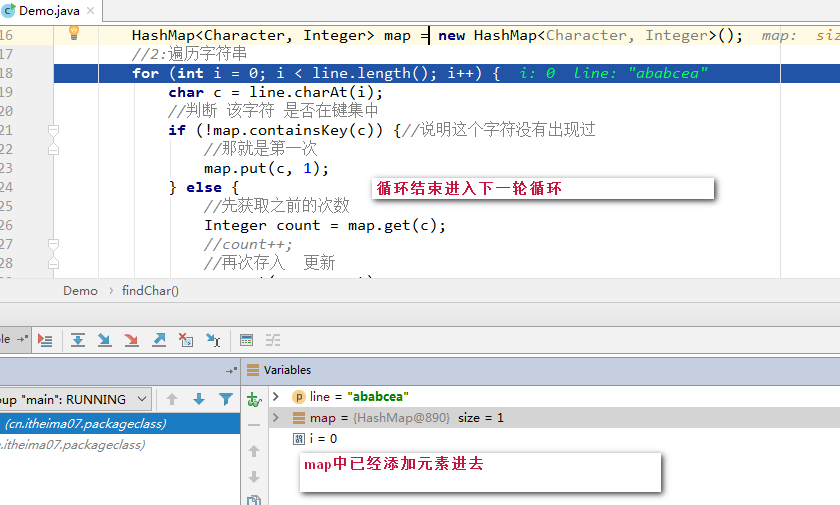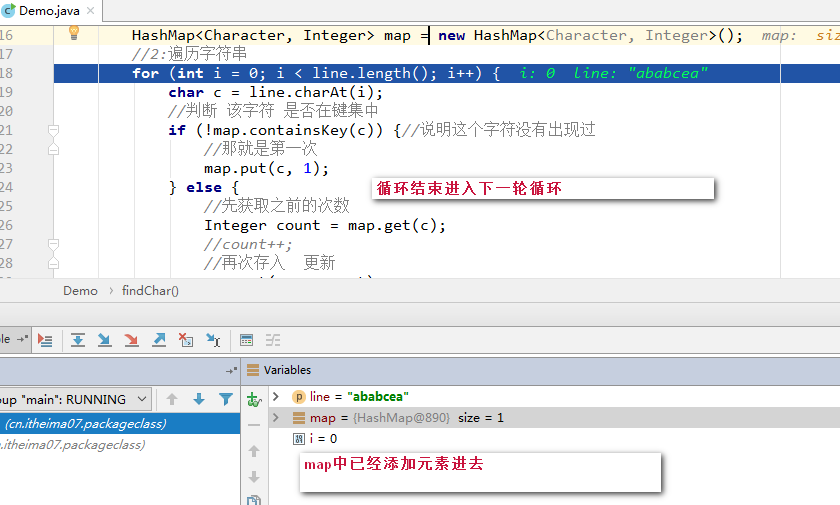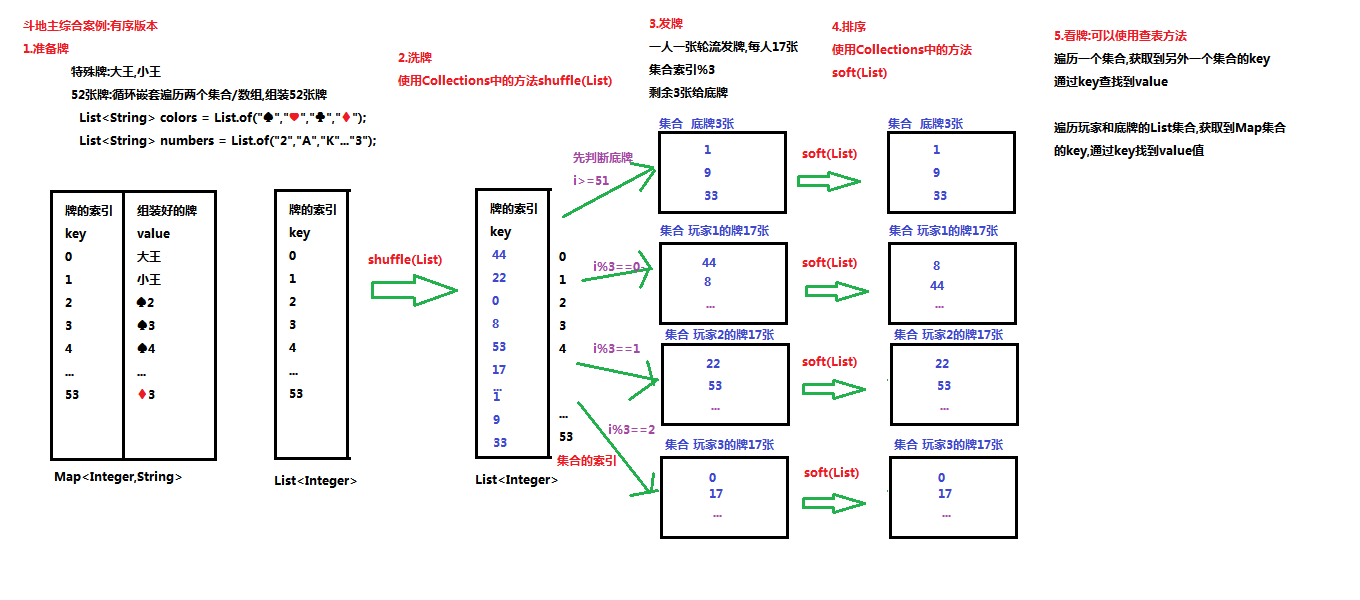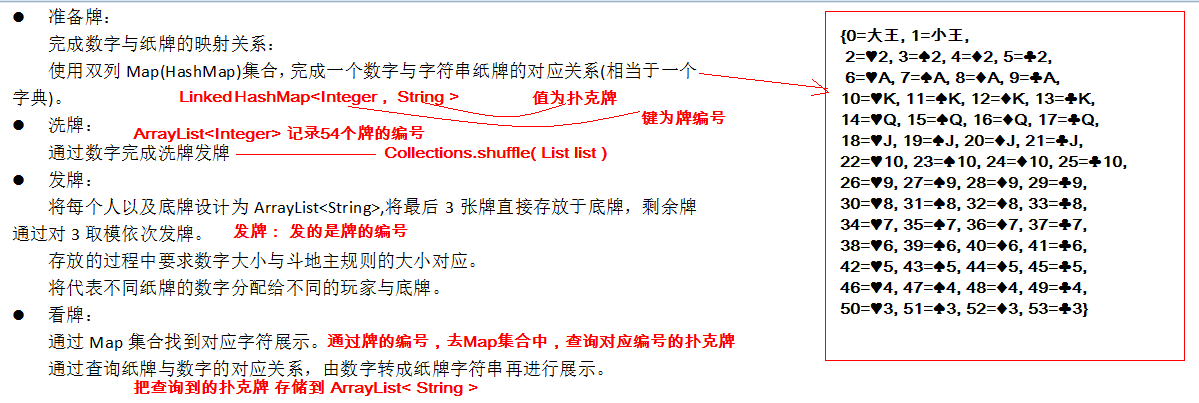Map 主要内容
教学目标
第一章 Map集合 1.1 概述 现实生活中,我们常会看到这样的一种集合:IP地址与主机名,身份证号与个人,系统用户名与系统用户对象等,这种一一对应的关系,就叫做映射。Java提供了专门的集合类用来存放这种对象关系的对象,即java.util.Map接口。
我们通过查看Map接口描述,发现Map接口下的集合与Collection接口下的集合,它们存储数据的形式不同,如下图。
Collection中的集合,元素是孤立存在的(理解为单身),向集合中存储元素采用一个个元素的方式存储。Map中的集合,元素是成对存在的(理解为夫妻)。每个元素由键与值两部分组成,通过键可以找对所对应的值。Collection中的集合称为单列集合,Map中的集合称为双列集合。需要注意的是,Map中的集合不能包含重复的键,值可以重复;每个键只能对应一个值。
1.2 Map常用子类 通过查看Map接口描述,看到Map有多个子类,这里我们主要讲解常用的HashMap集合、LinkedHashMap集合。
**HashMap<K,V>**:存储数据采用的哈希表结构,元素的存取顺序不能保证一致。由于要保证键的唯一、不重复,需要重写键的hashCode()方法、equals()方法。
**LinkedHashMap<K,V>**:HashMap下有个子类LinkedHashMap,存储数据采用的哈希表结构+链表结构。通过链表结构可以保证元素的存取顺序一致;通过哈希表结构可以保证的键的唯一、不重复,需要重写键的hashCode()方法、equals()方法。
tips:Map接口中的集合都有两个泛型变量<K,V>,在使用时,要为两个泛型变量赋予数据类型。两个泛型变量<K,V>的数据类型可以相同,也可以不同。
1.3 Map接口中的常用方法 Map接口中定义了很多方法,常用的如下:
public V put(K key, V value): 把指定的键与指定的值添加到Map集合中。public V remove(Object key): 把指定的键 所对应的键值对元素 在Map集合中删除,返回被删除元素的值。public V get(Object key) 根据指定的键,在Map集合中获取对应的值。boolean containsKey(Object key) 判断集合中是否包含指定的键。public Set<K> keySet(): 获取Map集合中所有的键,存储到Set集合中。public Set<Map.Entry<K,V>> entrySet(): 获取到Map集合中所有的键值对对象的集合(Set集合)。
Map接口的方法演示
1 2 3 4 5 6 7 8 9 10 11 12 13 14 15 16 17 18 19 20 public class MapDemo public static void main (String[] args) HashMap<String, String> map = new HashMap<String, String>(); map.put("黄晓明" , "杨颖" ); map.put("文章" , "马伊琍" ); map.put("邓超" , "孙俪" ); System.out.println(map); System.out.println(map.remove("邓超" )); System.out.println(map); System.out.println(map.get("黄晓明" )); System.out.println(map.get("邓超" )); } }
tips:
使用put方法时,若指定的键(key)在集合中没有,则没有这个键对应的值,返回null,并把指定的键值添加到集合中;
若指定的键(key)在集合中存在,则返回值为集合中键对应的值(该值为替换前的值),并把指定键所对应的值,替换成指定的新值。
1.4 Map集合遍历键找值方式 键找值方式:即通过元素中的键,获取键所对应的值
分析步骤:
获取Map中所有的键,由于键是唯一的,所以返回一个Set集合存储所有的键。方法提示:keyset()
遍历键的Set集合,得到每一个键。
根据键,获取键所对应的值。方法提示:get(K key)
代码演示:
1 2 3 4 5 6 7 8 9 10 11 12 13 14 15 16 17 18 19 20 public class MapDemo01 public static void main (String[] args) HashMap<String, String> map = new HashMap<String,String>(); map.put("胡歌" , "霍建华" ); map.put("郭德纲" , "于谦" ); map.put("薛之谦" , "大张伟" ); Set<String> keys = map.keySet(); for (String key : keys) { String value = map.get(key); System.out.println(key+"的CP是:" +value); } } }
遍历图解:
1.5 Entry键值对对象 我们已经知道,Map中存放的是两种对象,一种称为key (键),一种称为value (值),它们在在Map中是一一对应关系,这一对对象又称做Map中的一个Entry(项)。Entry将键值对的对应关系封装成了对象。即键值对对象,这样我们在遍历Map集合时,就可以从每一个键值对(Entry)对象中获取对应的键与对应的值。
既然Entry表示了一对键和值,那么也同样提供了获取对应键和对应值得方法:
public K getKey():获取Entry对象中的键。public V getValue():获取Entry对象中的值。
在Map集合中也提供了获取所有Entry对象的方法:
public Set<Map.Entry<K,V>> entrySet(): 获取到Map集合中所有的键值对对象的集合(Set集合)。
1 2 3 4 5 6 7 8 9 10 11 12 13 14 15 16 17 18 19 20 21 22 23 24 25 26 27 28 29 30 31 32 33 34 35 36 37 38 39 40 41 42 43 44 45 46 47 48 49 50 51 52 53 54 55 56 57 58 59 60 61 62 63 64 65 66 67 68 69 70 71 72 73 74 75 76 77 78 79 80 81 82 83 84 85 86 87 88 89 90 91 92 93 94 95 96 97 98 99 100 101 102 103 104 105 106 107 108 109 110 111 112 113 114 115 116 package com.itheima.demo01.Map;import java.util.HashMap;import java.util.Map;public class Demo01Map public static void main (String[] args) show04(); } private static void show04 () Map<String,Integer> map = new HashMap<>(); map.put("赵丽颖" ,168 ); map.put("杨颖" ,165 ); map.put("林志玲" ,178 ); boolean b1 = map.containsKey("赵丽颖" ); System.out.println("b1:" +b1); boolean b2 = map.containsKey("赵颖" ); System.out.println("b2:" +b2); } private static void show03 () Map<String,Integer> map = new HashMap<>(); map.put("赵丽颖" ,168 ); map.put("杨颖" ,165 ); map.put("林志玲" ,178 ); Integer v1 = map.get("杨颖" ); System.out.println("v1:" +v1); Integer v2 = map.get("迪丽热巴" ); System.out.println("v2:" +v2); } private static void show02 () Map<String,Integer> map = new HashMap<>(); map.put("赵丽颖" ,168 ); map.put("杨颖" ,165 ); map.put("林志玲" ,178 ); System.out.println(map); Integer v1 = map.remove("林志玲" ); System.out.println("v1:" +v1); System.out.println(map); Integer v2 = map.remove("林志颖" ); System.out.println("v2:" +v2); System.out.println(map); } private static void show01 () Map<String,String> map = new HashMap<>(); String v1 = map.put("李晨" , "范冰冰1" ); System.out.println("v1:" +v1); String v2 = map.put("李晨" , "范冰冰2" ); System.out.println("v2:" +v2); System.out.println(map); map.put("冷锋" ,"龙小云" ); map.put("杨过" ,"小龙女" ); map.put("尹志平" ,"小龙女" ); System.out.println(map); } }
1.6 Map集合遍历键值对方式 键值对方式:即通过集合中每个键值对(Entry)对象,获取键值对(Entry)对象中的键与值。
操作步骤与图解:
获取Map集合中,所有的键值对(Entry)对象,以Set集合形式返回。方法提示:entrySet()。
遍历包含键值对(Entry)对象的Set集合,得到每一个键值对(Entry)对象。
通过键值对(Entry)对象,获取Entry对象中的键与值。 方法提示:getkey() getValue()
1 2 3 4 5 6 7 8 9 10 11 12 13 14 15 16 17 18 19 20 21 public class MapDemo02 public static void main (String[] args) HashMap<String, String> map = new HashMap<String,String>(); map.put("胡歌" , "霍建华" ); map.put("郭德纲" , "于谦" ); map.put("薛之谦" , "大张伟" ); Set<Entry<String,String>> entrySet = map.entrySet(); for (Entry<String, String> entry : entrySet) { String key = entry.getKey(); String value = entry.getValue(); System.out.println(key+"的CP是:" +value); } } }
遍历图解:
tips:Map集合不能直接使用迭代器或者foreach进行遍历。但是转成Set之后就可以使用了。
demo in class
1 2 3 4 5 6 7 8 9 10 11 12 13 14 15 16 17 18 19 20 21 22 23 24 25 26 27 28 29 30 31 32 33 34 35 36 37 38 39 40 41 42 43 44 45 46 47 48 49 50 51 52 package com.itheima.demo01.Map;import java.util.HashMap;import java.util.Iterator;import java.util.Map;import java.util.Set;class Demo02KeySet public static void main (String[] args) Map<String,Integer> map = new HashMap<>(); map.put("赵丽颖" ,168 ); map.put("杨颖" ,165 ); map.put("林志玲" ,178 ); Set<String> set = map.keySet(); Iterator<String> it = set.iterator(); while (it.hasNext()){ String key = it.next(); Integer value = map.get(key); System.out.println(key+"=" +value); } System.out.println("-------------------" ); for (String key : set){ Integer value = map.get(key); System.out.println(key+"=" +value); } System.out.println("-------------------" ); for (String key : map.keySet()){ Integer value = map.get(key); System.out.println(key+"=" +value); } } }
entrySet()
1 2 3 4 5 6 7 8 9 10 11 12 13 14 15 16 17 18 19 20 21 22 23 24 25 26 27 28 29 30 31 32 33 34 35 36 37 38 39 40 41 42 43 44 45 46 47 48 package com.itheima.demo01.Map;import java.util.HashMap;import java.util.Iterator;import java.util.Map;import java.util.Set;public class Demo03EntrySet public static void main (String[] args) Map<String,Integer> map = new HashMap<>(); map.put("赵丽颖" ,168 ); map.put("杨颖" ,165 ); map.put("林志玲" ,178 ); Set<Map.Entry<String, Integer>> set = map.entrySet(); Iterator<Map.Entry<String, Integer>> it = set.iterator(); while (it.hasNext()){ Map.Entry<String, Integer> entry = it.next(); String key = entry.getKey(); Integer value = entry.getValue(); System.out.println(key+"=" +value); } System.out.println("-----------------------" ); for (Map.Entry<String,Integer> entry:set){ String key = entry.getKey(); Integer value = entry.getValue(); System.out.println(key+"=" +value); } } }
1.7 HashMap存储自定义类型键值 练习:每位学生(姓名,年龄)都有自己的家庭住址。那么,既然有对应关系,则将学生对象和家庭住址存储到map集合中。学生作为键, 家庭住址作为值。
注意,学生姓名相同并且年龄相同视为同一名学生。
编写学生类:
1 2 3 4 5 6 7 8 9 10 11 12 13 14 15 16 17 18 19 20 21 22 23 24 25 26 27 28 29 30 31 32 33 34 35 36 37 38 39 40 41 42 43 public class Student private String name; private int age; public Student () } public Student (String name, int age) this .name = name; this .age = age; } public String getName () return name; } public void setName (String name) this .name = name; } public int getAge () return age; } public void setAge (int age) this .age = age; } @Override public boolean equals (Object o) if (this == o) return true ; if (o == null || getClass() != o.getClass()) return false ; Student student = (Student) o; return age == student.age && Objects.equals(name, student.name); } @Override public int hashCode () return Objects.hash(name, age); } }
编写测试类:
1 2 3 4 5 6 7 8 9 10 11 12 13 14 15 16 17 18 19 public class HashMapTest public static void main (String[] args) Map<Student,String>map = new HashMap<Student,String>(); map.put(newStudent("lisi" ,28 ), "上海" ); map.put(newStudent("wangwu" ,22 ), "北京" ); map.put(newStudent("zhaoliu" ,24 ), "成都" ); map.put(newStudent("zhouqi" ,25 ), "广州" ); map.put(newStudent("wangwu" ,22 ), "南京" ); Set<Student>keySet = map.keySet(); for (Student key: keySet){ Stringvalue = map.get(key); System.out.println(key.toString()+"....." +value); } } }
当给HashMap中存放自定义对象时,如果自定义对象作为key存在,这时要保证对象唯一,必须复写对象的hashCode和equals方法(如果忘记,请回顾HashSet存放自定义对象)。
如果要保证map中存放的key和取出的顺序一致,可以使用java.util.LinkedHashMap集合来存放。
1 2 3 4 5 6 7 8 9 10 11 12 13 14 15 16 17 18 19 20 21 22 23 24 25 26 27 28 29 30 31 32 33 34 35 36 37 38 39 40 41 42 43 44 45 46 47 48 49 50 51 52 53 54 55 56 57 58 59 60 61 62 63 64 65 66 67 68 69 70 71 72 73 74 75 76 77 78 79 80 81 82 83 84 85 86 87 88 89 90 91 92 93 94 95 96 97 98 99 100 101 102 103 104 105 106 107 108 109 110 111 112 113 114 115 116 117 118 119 120 121 package com.itheima.demo02.Map;import java.util.HashMap;import java.util.Map;import java.util.Set;public class Demo01HashMapSavePerson public static void main (String[] args) show02(); } private static void show02 () HashMap<Person,String> map = new HashMap<>(); map.put(new Person("女王" ,18 ),"英国" ); map.put(new Person("秦始皇" ,18 ),"秦国" ); map.put(new Person("普京" ,30 ),"俄罗斯" ); map.put(new Person("女王" ,18 ),"毛里求斯" ); Set<Map.Entry<Person, String>> set = map.entrySet(); for (Map.Entry<Person, String> entry : set) { Person key = entry.getKey(); String value = entry.getValue(); System.out.println(key+"-->" +value); } } private static void show01 () HashMap<String,Person> map = new HashMap<>(); map.put("北京" ,new Person("张三" ,18 )); map.put("上海" ,new Person("李四" ,19 )); map.put("广州" ,new Person("王五" ,20 )); map.put("北京" ,new Person("赵六" ,18 )); Set<String> set = map.keySet(); for (String key : set) { Person value = map.get(key); System.out.println(key+"-->" +value); } } } package com.itheima.demo02.Map;import java.util.Objects;public class Person private String name; private int age; public Person () } public Person (String name, int age) this .name = name; this .age = age; } @Override public String toString () return "Person{" + "name='" + name + '\'' + ", age=" + age + '}' ; } @Override public boolean equals (Object o) if (this == o) return true ; if (o == null || getClass() != o.getClass()) return false ; Person person = (Person) o; return age == person.age && Objects.equals(name, person.name); } @Override public int hashCode () return Objects.hash(name, age); } public String getName () return name; } public void setName (String name) this .name = name; } public int getAge () return age; } public void setAge (int age) this .age = age; } }
1.8 LinkedHashMap 我们知道HashMap保证成对元素唯一,并且查询速度很快,可是成对元素存放进去是没有顺序的,那么我们要保证有序,还要速度快怎么办呢?
在HashMap下面有一个子类LinkedHashMap,它是链表和哈希表组合的一个数据存储结构。
1 2 3 4 5 6 7 8 9 10 11 12 public class LinkedHashMapDemo public static void main (String[] args) LinkedHashMap<String, String> map = new LinkedHashMap<String, String>(); map.put("邓超" , "孙俪" ); map.put("李晨" , "范冰冰" ); map.put("刘德华" , "朱丽倩" ); Set<Entry<String, String>> entrySet = map.entrySet(); for (Entry<String, String> entry : entrySet) { System.out.println(entry.getKey() + " " + entry.getValue()); } } }
结果:
demo in class
1 2 3 4 5 6 7 8 9 10 11 12 13 14 15 16 17 18 19 20 21 22 23 24 25 26 27 28 package com.itheima.demo03.Map;import java.util.HashMap;import java.util.LinkedHashMap;public class Demo01LinkedHashMap public static void main (String[] args) HashMap<String,String> map = new HashMap<>(); map.put("a" ,"a" ); map.put("c" ,"c" ); map.put("b" ,"b" ); map.put("a" ,"d" ); System.out.println(map); LinkedHashMap<String,String> linked = new LinkedHashMap<>(); linked.put("a" ,"a" ); linked.put("c" ,"c" ); linked.put("b" ,"b" ); linked.put("a" ,"d" ); System.out.println(linked); } }
Hashtable了解即可
1 2 3 4 5 6 7 8 9 10 11 12 13 14 15 16 17 18 19 20 21 22 23 24 25 26 27 28 29 30 31 32 package com.itheima.demo03.Map;import java.util.HashMap;import java.util.Hashtable;public class Demo02Hashtable public static void main (String[] args) HashMap<String,String> map = new HashMap<>(); map.put(null ,"a" ); map.put("b" ,null ); map.put(null ,null ); System.out.println(map); Hashtable<String,String> table = new Hashtable<>(); table.put(null ,null ); } }
1.9 Map集合练习
1 2 3 4 5 6 7 8 9 10 11 12 13 14 15 16 17 18 19 20 21 22 23 24 25 26 27 28 29 30 31 32 33 34 35 36 37 38 39 40 41 42 43 44 45 46 47 48 49 50 package com.itheima.demo03.Map;import java.util.HashMap;import java.util.Scanner;public class Demo03MapTest public static void main (String[] args) Scanner sc = new Scanner(System.in); System.out.println("请输入一个字符串:" ); String str = sc.next(); HashMap<Character,Integer> map = new HashMap<>(); for (char c :str.toCharArray()){ if (map.containsKey(c)){ Integer value = map.get(c); value++; map.put(c,value); }else { map.put(c,1 ); } } for (Character key :map.keySet()){ Integer value = map.get(key); System.out.println(key+"=" +value); } } }
需求:
计算一个字符串中每个字符出现次数。
分析:
获取一个字符串对象
创建一个Map集合,键代表字符,值代表次数。
遍历字符串得到每个字符。
判断Map中是否有该键。
如果没有,第一次出现,存储次数为1;如果有,则说明已经出现过,获取到对应的值进行++,再次存储。
打印最终结果
代码:
1 2 3 4 5 6 7 8 9 10 11 12 13 14 15 16 17 18 19 20 21 22 23 24 25 26 27 28 29 public class MapTest public static void main (String[] args) System.out.println("请录入一个字符串:" ); String line = new Scanner(System.in).nextLine(); findChar(line); } private static void findChar (String line) HashMap<Character, Integer> map = new HashMap<Character, Integer>(); for (int i = 0 ; i < line.length(); i++) { char c = line.charAt(i); if (!map.containsKey(c)) { map.put(c, 1 ); } else { Integer count = map.get(c); map.put(c, ++count); } } System.out.println(map); } }
第二章 补充知识点 2.1 JDK9对集合添加的优化 通常,我们在代码中创建一个集合(例如,List 或 Set ),并直接用一些元素填充它。 实例化集合,几个 add方法 调用,使得代码重复。
1 2 3 4 5 6 7 8 9 public class Demo01 public static void main (String[] args) List<String> list = new ArrayList<>(); list.add("abc" ); list.add("def" ); list.add("ghi" ); System.out.println(list); } }
Java 9,添加了几种集合工厂方法,更方便创建少量元素的集合、map实例。新的List、Set、Map的静态工厂方法可以更方便地创建集合的不可变实例。
例子:
1 2 3 4 5 6 7 8 9 10 11 public class HelloJDK9 public static void main (String[] args) Set<String> str1=Set.of("a" ,"b" ,"c" ); System.out.println(str1); Map<String,Integer> str2=Map.of("a" ,1 ,"b" ,2 ); System.out.println(str2); List<String> str3=List.of("a" ,"b" ); System.out.println(str3); } }
需要注意以下两点:
1:of()方法只是Map,List,Set这三个接口的静态方法,其父类接口和子类实现并没有这类方法,比如 HashSet,ArrayList等待;
2:返回的集合是不可变的;
demo in class
1 2 3 4 5 6 7 8 9 10 11 12 13 14 15 16 17 18 19 20 21 22 23 24 25 26 27 28 29 30 31 32 33 34 package com.itheima.demo04.JDK9;import java.util.List;import java.util.Map;import java.util.Set;public class Demo01JDK9 public static void main (String[] args) List<String> list = List.of("a" , "b" , "a" , "c" , "d" ); System.out.println(list); Set<String> set = Set.of("a" , "b" , "c" , "d" ); System.out.println(set); Map<String, Integer> map = Map.of("张三" , 18 , "李四" , 19 , "王五" , 20 ); System.out.println(map); } }
2.2 Debug追踪 1 2 3 4 5 6 7 8 9 10 11 12 13 14 15 16 17 18 19 20 21 22 23 24 25 26 27 28 29 30 31 32 33 34 35 36 37 38 39 package com.itheima.demo05.Debug;public class Demo01Debug public static void main (String[] args) print(); } private static void print () System.out.println("HelloWorld" ); System.out.println("HelloWorld" ); System.out.println("HelloWorld" ); System.out.println("HelloWorld" ); System.out.println("HelloWorld" ); } }
使用IDEA的断点调试功能,查看程序的运行过程
在有效代码行,点击行号右边的空白区域,设置断点,程序执行到断点将停止,我们可以手动来运行程序
点击Debug运行模式
程序停止在断点上不再执行,而IDEA最下方打开了Debug调试窗口
Debug调试窗口介绍
快捷键F8,代码向下执行一行,第九行执行完毕,执行到第10行(第10行还未执行)
切换到控制台面板,控制台显示 请录入一个字符串: 并且等待键盘录入
快捷键F8,程序继续向后执行,执行键盘录入操作,在控制台录入数据 ababcea
回车之后效果:
调试界面效果:
此时到达findChar方法,快捷键F7,进入方法findChar
快捷键F8 接续执行,创建了map对象,变量区域显示
快捷键F8 接续执行,进入到循环中,循环变量i为 0,F8再继续执行,就获取到变量c赋值为字符‘a’ 字节值97
快捷键F8 接续执行,进入到判断语句中,因为该字符 不在Map集合键集中,再按F8执行,进入该判断中
快捷键F8 接续执行,循环结束,进入下次循环,此时map中已经添加一对儿元素
快捷键F8 接续执行,进入下次循环,再继续上面的操作,我们就可以看到代码每次是如何执行的了
如果不想继续debug,那么可以使用快捷键F9,程序正常执行到结束,程序结果在控制台显示
第三章 模拟斗地主洗牌发牌 3.1 案例介绍
按照斗地主的规则,完成洗牌发牌的动作。
具体规则:
组装54张扑克牌将
54张牌顺序打乱
三个玩家参与游戏,三人交替摸牌,每人17张牌,最后三张留作底牌。
查看三人各自手中的牌(按照牌的大小排序)、底牌
规则:手中扑克牌从大到小的摆放顺序:大王,小王,2,A,K,Q,J,10,9,8,7,6,5,4,3
3.2 案例需求分析
准备牌:
完成数字与纸牌的映射关系:
使用双列Map(HashMap)集合,完成一个数字与字符串纸牌的对应关系(相当于一个字典)。
洗牌:
通过数字完成洗牌发牌
发牌:
将每个人以及底牌设计为ArrayList,将最后3张牌直接存放于底牌,剩余牌通过对3取模依次发牌。
存放的过程中要求数字大小与斗地主规则的大小对应。
将代表不同纸牌的数字分配给不同的玩家与底牌。
看牌:
通过Map集合找到对应字符展示。
通过查询纸牌与数字的对应关系,由数字转成纸牌字符串再进行展示。
3.3 实现代码步骤 1 2 3 4 5 6 7 8 9 10 11 12 13 14 15 16 17 18 19 20 21 22 23 24 25 26 27 28 29 30 31 32 33 34 35 36 37 38 39 40 41 42 43 44 45 46 47 48 49 50 51 52 53 54 55 56 57 58 59 60 61 62 63 64 65 66 67 68 69 70 71 72 73 74 75 76 77 78 79 80 81 82 83 84 85 86 87 88 89 90 91 92 93 94 95 96 97 98 99 100 101 102 103 104 105 106 public class Poker public static void main (String[] args) HashMap<Integer, String> pokerMap = new HashMap<Integer, String>(); ArrayList<String> colors = new ArrayList<String>(); ArrayList<String> numbers = new ArrayList<String>(); Collections.addAll(colors, "♦" , "♣" , "♥" , "♠" ); Collections.addAll(numbers, "2" , "A" , "K" , "Q" , "J" , "10" , "9" , "8" , "7" , "6" , "5" , "4" , "3" ); int count = 1 ; pokerMap.put(count++, "大王" ); pokerMap.put(count++, "小王" ); for (String number : numbers) { for (String color : colors) { String card = color + number; pokerMap.put(count++, card); } } Set<Integer> numberSet = pokerMap.keySet(); ArrayList<Integer> numberList = new ArrayList<Integer>(); numberList.addAll(numberSet); Collections.shuffle(numberList); ArrayList<Integer> noP1 = new ArrayList<Integer>(); ArrayList<Integer> noP2 = new ArrayList<Integer>(); ArrayList<Integer> noP3 = new ArrayList<Integer>(); ArrayList<Integer> dipaiNo = new ArrayList<Integer>(); for (int i = 0 ; i < numberList.size(); i++) { Integer no = numberList.get(i); if (i >= 51 ) { dipaiNo.add(no); } else { if (i % 3 == 0 ) { noP1.add(no); } else if (i % 3 == 1 ) { noP2.add(no); } else { noP3.add(no); } } } Collections.sort(noP1); Collections.sort(noP2); Collections.sort(noP3); Collections.sort(dipaiNo); ArrayList<String> player1 = new ArrayList<String>(); ArrayList<String> player2 = new ArrayList<String>(); ArrayList<String> player3 = new ArrayList<String>(); ArrayList<String> dipai = new ArrayList<String>(); for (Integer i : noP1) { String card = pokerMap.get(i); player1.add(card); } for (Integer i : noP2) { String card = pokerMap.get(i); player2.add(card); } for (Integer i : noP3) { String card = pokerMap.get(i); player3.add(card); } for (Integer i : dipaiNo) { String card = pokerMap.get(i); dipai.add(card); } System.out.println("令狐冲:" +player1); System.out.println("石破天:" +player2); System.out.println("鸠摩智:" +player3); System.out.println("底牌:" +dipai); } }
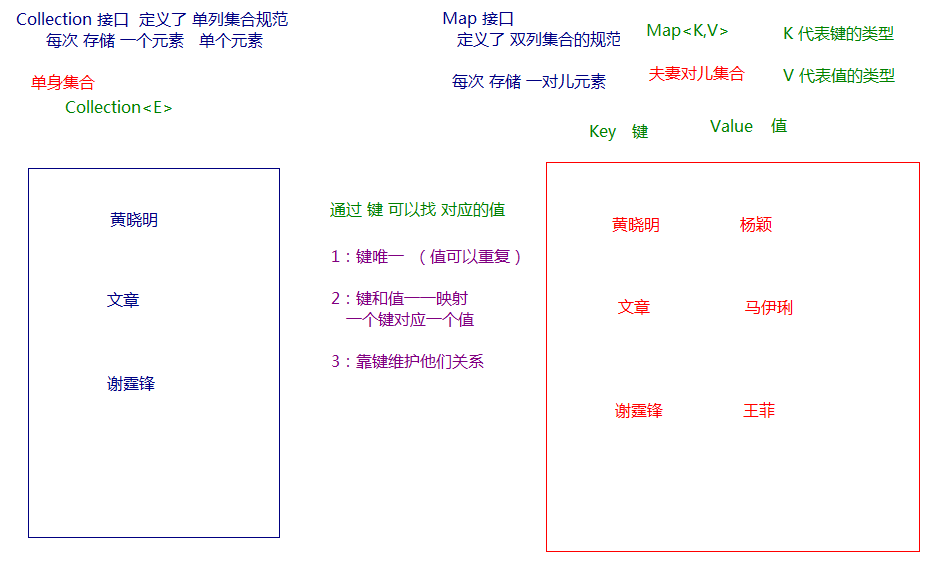
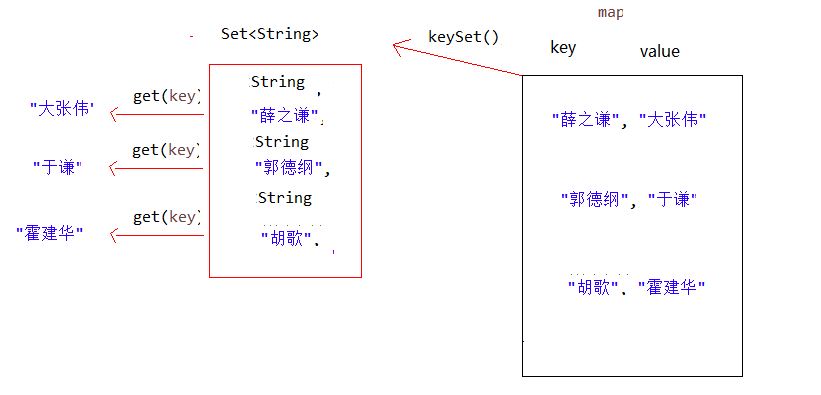
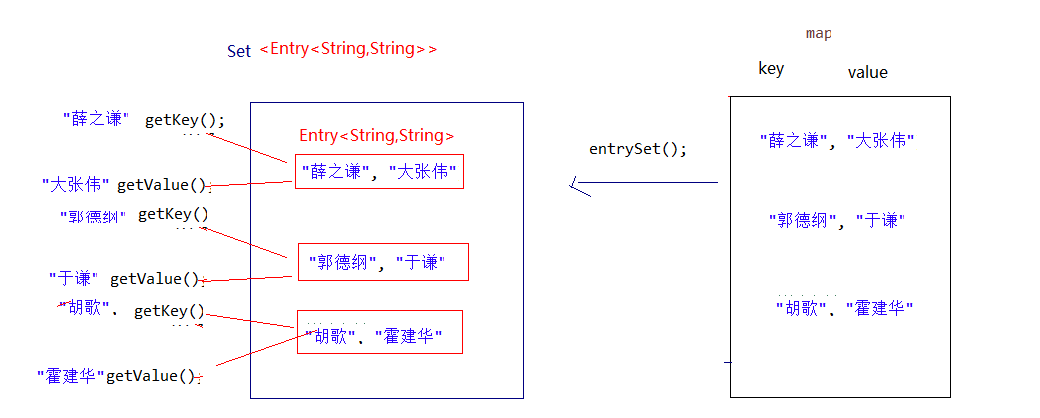

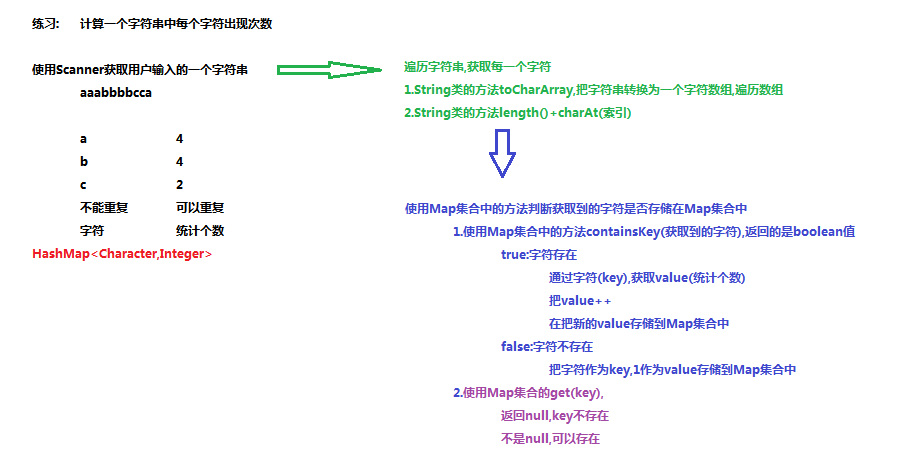
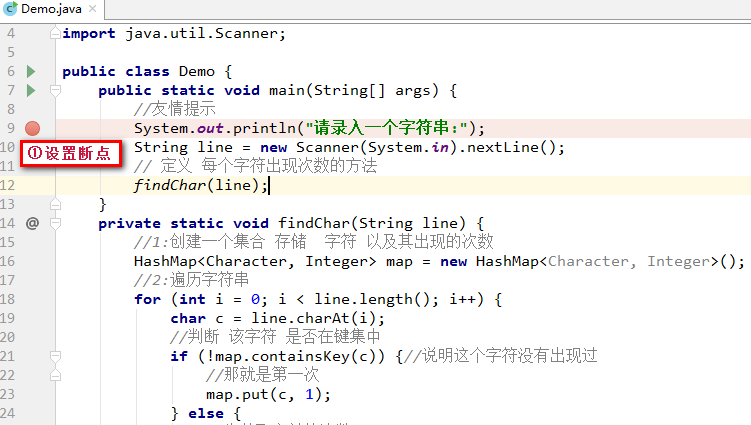
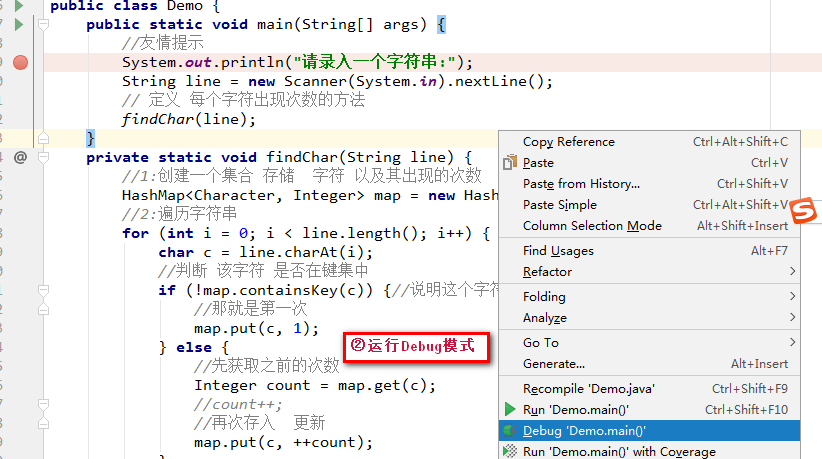
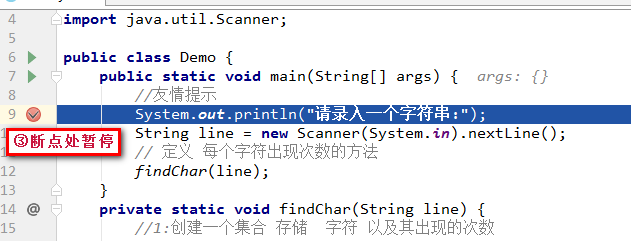 !
!